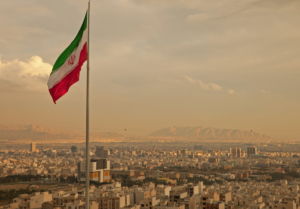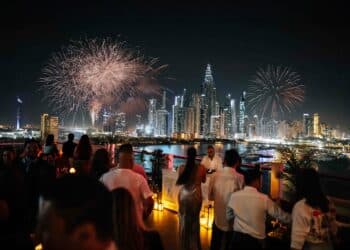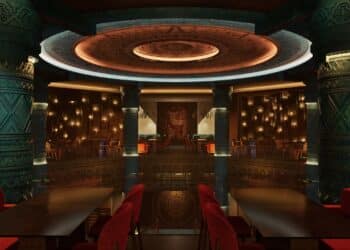Taking a look at the challenges and opportunities emerging in the region’s most promising hotel market.
 September 15, 2015 heralded a new era for Iran’s dormant hotel industry.
September 15, 2015 heralded a new era for Iran’s dormant hotel industry.
International hospitality giant AccorHotels officially signed its two inaugural properties in Tehran with owning firm Aria Ziggurat Tourism Development Company. When Novotel IKIA and ibis IKIA open their doors this month (October 2015), it will mark a momentous occasion, says Christophe Landais, managing director, Accor Middle East.
“When we go into a country we try to be leader and in Iran we are the first international company to sign and open properties in 36 years,” he says. “We intend to remain leader in this market, taking advantage of being the first entrant.” France-headquartered Accor, one of the world’s biggest hotel companies and renowned for its bold expansion strategy in frontier markets, has been “actively watching Iran for many years”, reveals Landais who is close to the action, having overseen Accor’s Middle East portfolio from the group’s regional headquarters in Dubai for some 16 years.
“We couldn’t move any quicker into this market because of the sanctions, embargoes and political situation,” he says. “But we have been in touch with possible investors and assisted some of them by making recommendations as to the type of hotels that should be developed in anticipation of the situation improving so we would be ready to sign those hotels.”
The trigger for Accor was the landmark agreement reached between Iran and six major world powers on July 14 this year, setting out plans to significantly limit Iran’s nuclear ability in return for lifting international oil and financial sanctions.

While the historic deal is still being debated in US Congress, in the words of President Barack Obama, it offers “an opportunity to move in a new direction”. It’s a move Iran’s pragmatic President Hassan Rouhani hopes will eventually bring an end to the isolation his nation of some 80 million people have experienced since the 1979 Iranian Revolution when US sanctions were first imposed. These embargoes have been expanded on numerous occasions since due to the perceived threat of Iran’s nuclear and political stance. But with the possibility of these crippling financial and trade constraints being removed in the not-too-distant future, opportunists from a number of industries and markets have dared to boldly go where no man has gone before, or at least for the last three decades. In fact the ink was barely dry on the July 14 agreement before a German plane full of the nation’s economic elite touched down in Tehran, the first in a rush of European ministers and business people flocking to a market poised to reopen after a 36-year hiatus.
Regardless of whether or not Obama can actually push the Iranian deal past the fiercely resistant Republicans in Congress, the gold rush has already started as governments and multinationals the world over look to capitalise on Iran’s massively untapped trade potential.
Accor was one of the savvy companies that seized the moment, signing on the dotted line for its two Tehran properties, which are both connected to the main terminal of Imam Khomeni International Airport, on July 29, just 15 days after Obama and Rouhani’s historic agreement was made.
“We are very excited about signing this partnership with Aria Ziggurat in Iran,” said AccorHotels’ chairman and CEO, Sébastien Bazin, speaking at the official management agreement signing on September 15.
“We are certain that Novotel and ibis will fit perfectly into the growth momentum that Iran’s hospitality sector is enjoying. Our brands are looking at huge growth potential in this country, which is home to almost 80 million people and is expanding its economy.” Accor is not the only branded hotel group to secure properties in Iran. UAE-based hospitality firm Rotana, also known for its maverick approach to entering emerging hotel markets, has signed management agreements for four hotels in Iran – two in Tehran (opening in 2018) and two in Mashad (opening in 2017).
Now that Accor and Rotana have thrown down the gauntlet, their experiences in Iran will be monitored closely by the global hotel industry and if the nuclear agreement gets the green light, a huge surge in new property signings is anticipated by industry analysts and professionals alike.
If sanctions are lifted the investment opportunities are vast says Elizabeth Winkle, managing director of STR Global.
“It’s not going to happen overnight, but I think there will be rapid growth and development,” she says. “Iran has a significant population and there are a number of areas of natural beauty and touristic interest. It’s just a question of how the country markets itself and what opportunities it wants to create after having been closed to much of the world.”
Market potential
Prior to the 1979 revolution, Tehran’s hotel market had one of the highest penetrations of international hotel operators in the region, with IHG, Hyatt, Hilton and Starwood operating properties in prime locations, according to TRI Consulting’s May 2015 report ‘Awaiting the gold rush – exploring the opportunities in Tehran’s hotel market’.

Following the revolution, the industry witnessed decades of stagnation, compounded by the onset of the Iraq-Iran war, which made owners reluctant to invest in property maintenance and improvement. As a result the quality of most hotels is below international standards.
There are around 96 hotels in Tehran (compared to Dubai’s 657-plus properties) of which just 13 (around 3,089 rooms) are classified four and five-star. The undersupply of inventory is evident when you consider the Iranian capital’s population is 12 million.
Occupancies at Tehran’s hotels increased from 58% in 2013 to 79% in 2014 as international relations thawed and tourism arrivals picked up. This generated a 56% hike in room rates from US$69 to $108 over that period, according to TRI Consulting’s report. Prior to the July 14 agreement, domestic and religious travel dominated Iran’s tourism market.
“However, since July 2013 the country has witnessed growth in international visitors,” says TRI Consulting Middle East’s associate director, Christopher Hewett. “This growth is attributed to the early negotiations over Iran’s nuclear programmes and the improved international relations and public image of Iran set forth by President Hossein Rouhani.” In late 2013, Rouhani revealed plans to attract 20 million visitors to Iran by 2025. “This is an ambitious target given the country only saw 4.8 million visitors in 2014, however, given Iran’s population of 80 million people, its diversity of tourism attractions and destinations, as well as opportunities for investment in the country’s industries, it has the potential to become a leading business and leisure tourism destination regionally and globally,” says Hewett.
“We anticipate the leisure market will mimic similar destinations in the region, notably Egypt, and will be driven by international groups embarking on a tour of the country’s key destinations and attractions. Furthermore we project a growing level of demand from regional residents taking advantage of short holiday periods and visiting individual cities.
“However the key growth segment will be regional and international corporate travellers. The significant opportunities in all sectors of the economy, notably oil and gas, financial services, pharmaceuticals and consumer goods, will result in a new wave of business travellers visiting the country in order to secure their position in the various markets.”
Ali Borhani, founder and CEO of Dubai-based strategic boutique advisory firm, Incubeemea, which recently published the industry’s first ‘Iran Hotel & Hospitality Report’, notes the potential of Iran’s youth as a source market for hotel business both domestically in Iran and international destinations given around 70% of the population is aged under 30. “One could argue that Iran is one of the largest concentrations of millennial guests who are keen to travel and learn and their needs and tastes are very different to those of their parents,” he says. “Therefore the biggest opportunity is in trendy, modern and well managed three- and four-star properties with a progressive and minimalist ambience but with connectivity, amenities, strong F&B offerings plus sports-related activities.”
Cultural tourism is another growth driver he says given Iran is home to 17 UNESCO registered World Heritage sites, while religious tourism, particularly to destination’s such as Iran’s ‘shrine city’, Mashad, located in the north-east of the country, is tipped for greatness. “All of this represents a very convincing opportunity for visitors, hoteliers and investors alike,” he says.
Iran is also a “true halal destination”, adds Borhani, with an offering “very much in line with the principals and values that Muslim travellers are looking for”, Borhani. “This could be a key driver in the volume and nature of the source markets that Iran can penetrate and secure,” he says, noting an Islamic economy study by Thomson Reuters valuing the global halal tourism market at $140 billion in 2013, predicted to rise to at least $238 billion by 2019.
All cities, all sectors
Hewett says that due to the “severe under supply in the market” with the number of hotels in Iran totaling just 640, there is growth potential across all segments, “from quality budget hotels to luxury five-star resorts”. Landais concurs: “We have an ambitious targets for Iran,” he says.
“Accor has 13 brands ranging from its economy ibis product, then its midscale Novotel and Mercure products, to the upscale Pullman and upper upscale Sofitel, so across the board we will be able to meet the demands required in Iran and we want to take a large share of the development pipeline.” All of Iran’s big cities with a population of more than 1.5 million inhabitants can “support a few market segments of hospitality, from economy to upscale”, according to Landais.
The decision to open Accor’s first two properties at Imam Khomeini International, adding a near 500-room cluster to the market, was based on the airport’s future potential, he explains. “It’s a relatively new airport that will be dedicated to international airline traffic so we felt it was a good opportunity to have two hotels here, particularly given the government’s 20-million-tourist target by 2025.”
Novotel IKIA (296 rooms) and ibis IKIA (196 rooms) are connected to the main airport terminal and within a 45-minute drive from downtown Tehran. “We have a physical advantage with the location of our hotels and it will be some time before our competitors can develop properties there,” adds Landais.
Rotana’s four upcoming Iranian properties – a four- and five-star Rayhaan-branded property in both Tehran and Mashad – are also strategically located, says the hospitality firm’s president and CEO, Omer Kaddouri.
The two in Tehran will be built next to one another on top of a brand new mall – “Iran’s equivalent to Dubai Mall” is being constructed by the properties’ owning company – offering a combined inventory of more than 400 keys. The two hotels in Iran’s aforementioned major pilgrimage city, Mashad, owned by the same construction firm, will be located around 1km from one another.
One will be attached to another brand new mall and the other in an “excellent location” boasting a “very modern design” that’s “completely new to Mashad”, says Kaddouri.
“Occupancies are already very high in Mashad due to domestic and international tourism to this shrine city and we believe we can make a difference in this market very quickly,” he says.
“Emirates launching a new [five times weekly] service to Mashad from Dubai [on September 1] is also great news for us.” Kaddouri says the Rayhaan brand sits well in the Iranian market because of its no-alcohol hotel concept.
“Our owner was familiar with this brand in Dubai and approached us to sign the four hotels,” he says. “We are already in discussions to sign more properties with them every year from 2016 onwards. “Iran has the potential to be one of our biggest growth markets if things pan out as everyone hopes they will, politically and thereafter, economically.
“As one of the first new hotel players on the ground, opening four iconic hotels simultaneously and introducing a brand new modern product that no one in Iran has seen before, we will get to know the market well and spot opportunities for our other brands. “I’d like to think we had 10 or more hotels open in Iran by 2025.”
The hurdles ahead
While Rotana and Accor have both established rapport with their respective Iranian owners, the ride may not be as smooth for some first-time investors and developers in the country’s hotel market, says Hewett.
“There are a number of challenges,” he stresses. “The first one relates to land prices in the major cities, primarily Tehran, where a lack of greenfield sites and elevated prices are hindering future development. “Furthermore, uncertainty over the legal framework of foreign investment, particularly in the hospitality industry, is impeding growth as investors spend an increasing amount of time understanding the landscape. Borhani says that while many entities in Iran are land rich there is a “liquidity trap”.
“Hence you have a lineup of keen operators who are willing to enter the market, some really interesting mixes of privately owned or institutional property portfolios and land banks, yet the commercial model and syndicated finance for hospitality development is still in its infancy,” he explains. “The most important aspect of the Iran deal is the mobility of capital and investments in and out of Iran and the fact of the matter is that any operator entering the market today will have to wait for the conversion of a property or a new Greenfield project.
“With sanctions being removed it simply means that by the time the operator has to deliver the repatriation of capital, revenues and profits earned it can do so through official banking channels.” While the rush to enter the Middle East’s “last frontier market” has well and truly started, led by international companies, exporters and investors, the world’s travelling public may be more reticent given the negative perceptions associated with Iran.
In the short term, domestic and corporate travel will drive visitor growth says Borhani, but he believes the leisure market has strong potential too. “There is a sense of curiosity among many people who are yet to visit Iran but are keen to explore its culture, landscape and nature,” he argues.
Kaddouri says it will “take time” to grow Iran’s leisure tourism industry but hopes the government will launch more global promotional campaigns to highlight the country’s compelling offering. “The more people who visit for business and have a positive experience the better,” he says.
“I think we’ll also see more MICE business in the future, particularly corporate meetings and also exhibitions, because everyone will want to sell their wares and invite the world to see them,” adds Kaddouri. Landais says Iran will also need to review its internet and credit card policies if it is to meet its ambitious tourism targets. “At the moment our Iranian hotels are bookable on web, but we are not connected to the web,” he explains. “There are also no international credit cards in Iran so as a foreigner you have to pay with cash. That will slow down the development of the tourism industry because today everything is done online and paid for with cards.”
Setting new standards
At hotel level, the main challenge new international operators entering the Iranian market face is getting the country’s workforce up to speed. Iran boasts a highly educated workforce yet its experience of world-class hotel standards is virtually non-existent. “Iran has some great talent and some particularly good engineers and technicians, but they don’t know about hospitality and service,” confirms Landais. “We will have around 300 staff when we open our two properties so we are training them on-site right now.” He says recruits have been selected based on their personality and approach, because “you can teach skill, but not attitude”.
Trainers from Accor’s Dubai-based academy are working with the new Iranian staff plus an English-language tutor is on hand to help teach them commercial English. Kaddouri reveals Rotana is seriously considering opening a hospitality school in Iran in conjunction with the owner of its four upcoming properties and has already discussed this opportunity with third-party educational providers.
“We will be employing up to 1,500 Iranians and we need to train them to international standards, particularly the service element,” he says. “We want to give young Iranians the chance to start something new, ensuring Rotana is perceived as a company that gives back to the community.” Both Kaddouri and Landais say as the first market entrants they have a duty to help foster a flourishing hospitality industry in Iran. “We have a responsibility to define the standards and train people to deliver to those standards,” Landais stresses. “We are lucky because the Iranians are naturally hospitable people.”


































































